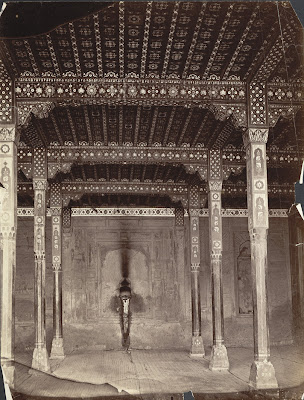Lahore Government College University or simply GCU, is synonymous with Lahore. Among the most famous of Lahore educational institutes, it is among the first educational institutions that were established in the Punjab. Generations of students have passed through its portals and attained eminent positions in all walks of life in Pakistan.
Although the establishment of a Central College at Lahore was sanctioned in 1856 with the condition that the teachers should be graduates of Oxford, Cambridge, Dublin or Durham, it was not until January 1, 1864 that the college opened its doors in the palace (haveli) of Dhian Singh/Khushal Singh, in Lahore's Walled City. The first principal was the famous Dr. G. W. Leitner whose name is closely attached to the College. In April 1871 the college moved to a large Bungalow near Anarkali. In 1873 its location was changed to another house called Rahim Khan’s Kothi.

When it was decided to move to more suitable premises, a site on an eminence north of the Soldier's Garden (Gol Bagh) was selected, and a 'picturesque building', with a large central clock tower was constructed. That Gothic was the chosen style for the building is not surprising. Among the first major structures of Lahore, the missionary zeal frequently expressed by the Lawrence brothers (Henry and John Lawrence) no doubt had an impact on the architectural expression of the college. As is well known, during the early Victorian age, every administrator from England arrived as a missionary soldier in the subcontinent, and what could better express the Christian zeal than buildings clad in Gothic attire?
The building was designed by W. Purdon, Superintendent Engineer, and constructed under the supervision of Executive Engineer Kannhaiya Lal. It was completed in 1877 at a cost of Rs. 320,000. A couple of years after its completion. Viceroy Lord Lytton presided over the convocation of 'Punjab University College' (1879) held in its convocation hall with its enormous height—"the great hall of the Lahore College, which was tastefully decorated and arranged for the occasion." Lytton papers recorded that the event was witnessed by "a large number of ladies and gentlemen, European and Native."
From the main road the main college building is seen above the landscaped terracing through the foliage of trees, presenting a picture postcard view. The Lahori brick is combined with sparing use of black Chiniot stone in the first floor columns as well as in the borders lining the openings. Pointed arches on the facade are accented with simple moldings, and the building is topped by a steeply sloping roof. According to Kannahiya Lal, the slate for the roof covering was acquired from Dalhousie Mountain hundreds of miles away.

The centre of the building is marked with an enormous entrance tower—a most impressive element representing the image of Government College. Placed on a 15' high podium, and accessible from the garden by a wide flight of stairs, the tower rises to a total height of 176'. Divided into four distinct storeys, it is terminated in the form of a spire. The battered sides of the octagonal tower carry quaint dormer windows, with its enormous clocks visible from great distances. The classrooms are accessed from a deep verandah which also provides protection from the strong Punjab sun.
The college has a large campus. It contains one of the earliest libraries of the province, which houses a large collection of books acquired over the years. Apart from several other structures, in the rear of the main college building is also located another historic building—a boarding house dating to 1892. Built around a quadrangle 160' by 170', at a cost of Rs. 57,000, it was designed to accommodate 100 students.
This prestigious educational institution has such distinguished alumni as Allama Iqbal, the visionary who galvanized the Muslims of South Asia through his poetry and philosophy to strive for a separate homeland and Dr. Abdus Salam, the noble laureate in physics.
After 147 Years of its wonderful history, the Government College, Lahore was raised to the status of a University in 2002. It was renamed as the GC University Lahore. The academic life here has been re-shaped in accordance with its new challenges and we hope to fulfill the expectations that go with a University. The GCU is committed to act as a promoter of quality education for all.
Although the college was granted the status of university by the Pakistan Government in 2002, the word college is still retained in the name for historical reasons and also because of the wide recognition of the name Government College in Pakistan. The University offers bachelor's, Master's, and Ph.D. degrees in a variety of disciplines. The university currently has more than 6000 students and 323 faculty members and is ranked at No.6 by HEC in General category. Alumni of Government College are called Ravians which is derived from the name of the magazine "Ravi", published by the administration of the college





























